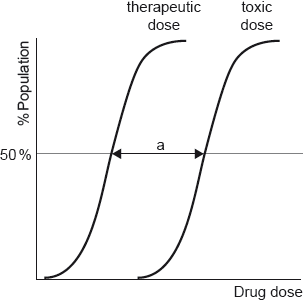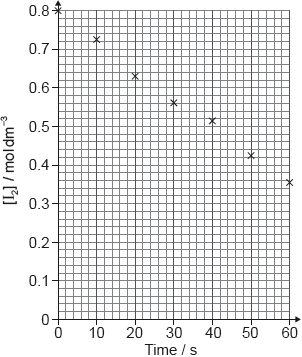| Date | May 2019 | Marks available | 1 | Reference code | 19M.3.sl.TZ1.1 |
| Level | SL | Paper | 3 | Time zone | TZ1 |
| Command term | Describe | Question number | 1 | Adapted from | N/A |
Question
Physical properties of elements vary according to atomic number. Sections 6 to 9 of the data booklet list some of these properties.
Deduce, giving a reason, the group of elements in the periodic table most likely to undergo sublimation.
Describe the density trend across periods 4 and 5 of the periodic table.
Suggest, with a reason, whether the lanthanoids or actinoids of the f-block would have the higher density.
Compare the ease of oxidation of s-block and d-block metals to their melting points and densities. Use section 25 of the data booklet.
Sketch how the first ionization energies of elements vary with their atomic radius.
Markscheme
group 18/noble gases [✔]
smallest difference between melting and boiling points
OR
weakest intermolecular forces «in that period» [✔]
Note: Accept “group 17/halogens”.
density increases «to a maximum in the transition elements» AND then decreases [✔]
actinoids AND density increases down all groups «due to large increase in atomic mass for small increase in atomic volume»
OR
actinoids AND «much» greater atomic mass with similar type of bonding
OR
actinoids AND density «of actinoids» atomic number 90 to 95 is greater than corresponding lanthanoids [✔]
Note: Accept “actinoids AND on graph actinoids have «much» greater density than lanthanoids”.
Alternative 1:
«metals with» low densities oxidize easier [✔]
«metals with» low melting points oxidize easier [✔]
Alternative 2:
in s-block «metals with» high densities oxidize easier
OR
in s-block «metals with» low melting points oxidize easier [✔]
in d-block «metals with» low densities oxidize easier
OR
in d-block «metals with» low melting points oxidize easier [✔]
Note: Award [1 max] for “s-block metals more easily oxidized” OR “s-block metals have lower melting points” OR “s-block metals have lower densities”.
Accept “have greater activity” for “oxidize easier”.
[✔]
Note: Accept any negative sloping line.
Do not award mark if line touches either axis.
Examiners report
Some candidates appeared to be unfamiliar with the term “sublimation”. Whilst most students correctly identified the noble gases as the group most likely to sublime there were a variety of other answers. Many students referred to “low melting and boiling points” rather than identifying the difference between these as the key factor.
Most students realised that density peaks around the middle of each of these periods, though a significant minority seemed unaware of the significance of “periods” and just reported the overall general increase in density.
Poorly answered. Some students seemed unaware of the terms “lanthanoids” and “actinoids”. Many others just stated the actinoids because they had greater atomic masses, without adding that the bonding, and hence the volume occupied by each atom, would be similar to the lanthanoids. Others responded in terms of the given data, but this required rather more justification than just stating “as can be seen from the graph”.
Almost all candidates gained some credit on this question and many obtained full marks. Students were generally aware that s-block elements are more reactive than d-block ones and hence are more easily oxidised. Many correctly linked this to lower melting points and densities. Often a causal relationship was implied (more reactive because of their low density/mp) but this was not penalised. A significant minority of students referred to only one of the physical properties; not reading the question fully?
Most students sketched a negative correlation between IE and radius, but then many lost the mark by drawing a line that met an axis; it is not possible for either to have a value of zero.



